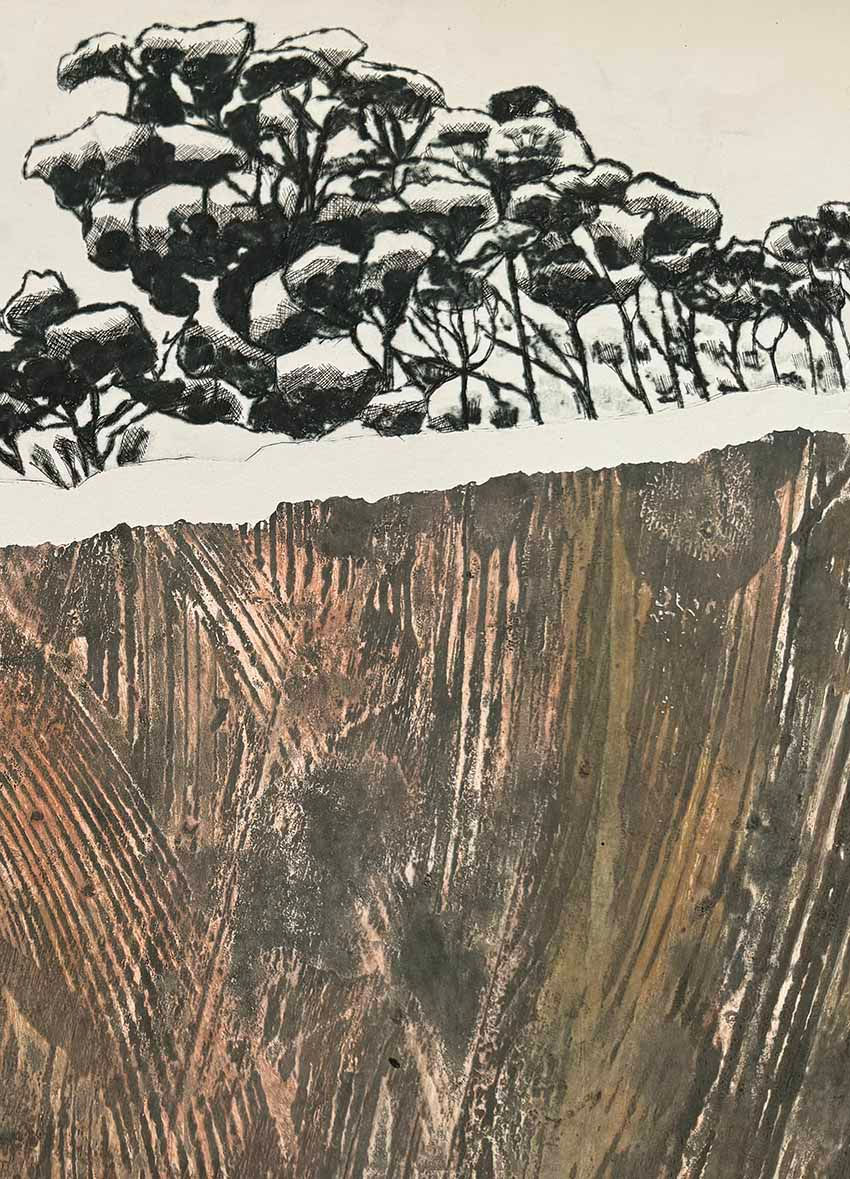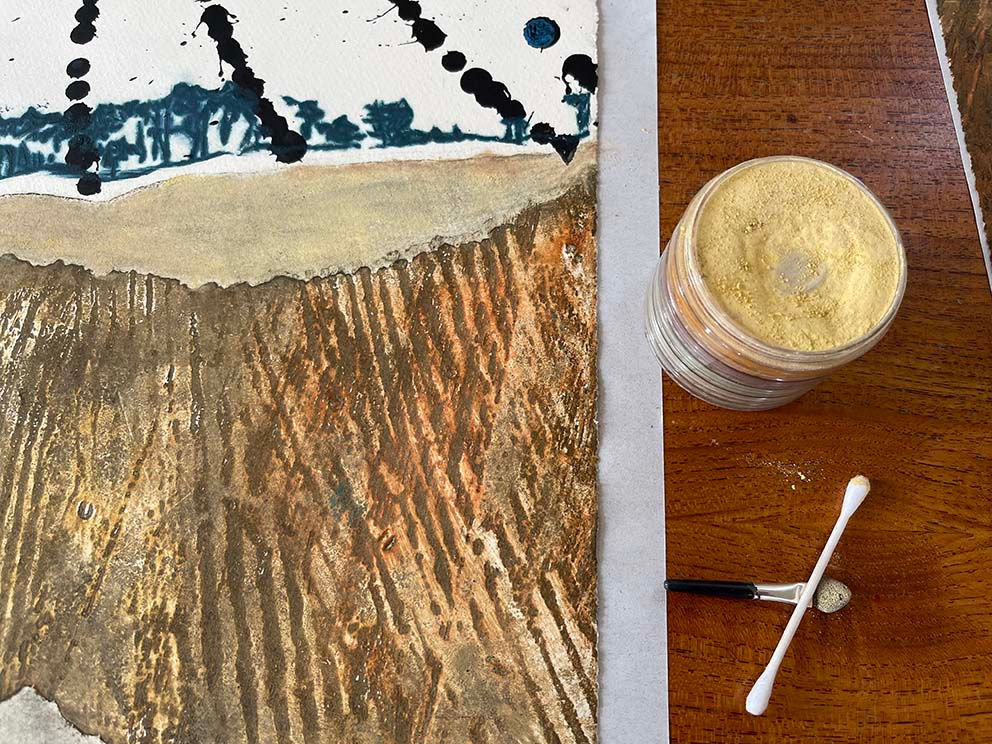Suttontown Chapel
Studio



Four Wedge- tailed Eagles on the Ridge 2023
Cleave the Lands
In 2019 Trudy applied and was included in a supportive role to undertake the Country Arts SA Limestone Coast Artist Retreat. For two weeks a group of artists from around the nation went on a tour of the Limestone Coast to learn about the Region and opportunities to make Land Art. The tour was virtually a study-tour so she came away with an understanding of the hydrology and ecology of the Region, the infrastructure required to support farm production, and the environmental challenges now faced by the community.
In October 2022 Trudy was handed the keys to the Suttontown Chapel. With her family and Merv Lock she pulled up the carpet so the original hardwood floorboard could breathe. They ripped up the 1990s Lino off the floor of what was previously the Suttontown Primary School teaching room and found that the original floor had been replaced with pine floorboards. The lino flooring had interesting edges and hard-set glue on the other side that had a good portion of the pine wood fibres stuck to it.Printmakers are often looking for great ways to add texture to their work.
The lino flooring had printable texture. Trudy used a toothbrush to rub ink into the underside of the lino in a collection of earthy colours. Then she rollered another earth-coloured ink over the lino. She tested her observations and ran the lino through a printing press so that the ink transferred to the paper. She then ran two more inked-up pieces of lino through the press to give a visual indication of a landscape in cross section. Colour and texture have been used to read as deposits of minerals.
Seeing the Woakwine Cutting while on the Limestone Coast Artist Retreat tour profoundly affected how Trudy considered the landscape. It was a great feat to make the cutting by a man and his tractor. The effect on the local environment was profound. The drainage of the waters from the swamp lands and accessibility to farming was transformational.Since arriving in the Limestone Coast, Trudy has wanted to discuss in her work how delicate this environment is and how fascinating the interconnection between natural processes of hydrology are and how dependent our communities are on it.As an artist Trudy is trained in the intellectual discourse of art world, but she values more the accessibility of art to the whole community.
This artwork is intended to contain visual elements that people can recognise. The thin silhouette of spindly trees on the horizon is a quintessentially Australian vision. People drive through the Region often see a tree plantation or remnant bush land along the side of the road.After taking all this into consideration, Trudy went out into the paddocks and drew the tree lines she observed. She then copied the original drawings and transferred them to plastic plate with permanent Texta. The tree line illustrations were etched by hand with an etching needle/tool into the soft plastic plate, which was then inked and passed through the press to print as the fourth layer of image onto the paper.
This work is intended to be seen in the context of the Cannon of Australian Minimalist Landscape Art, but it is also intended to contain enough visual information that anyone is reminded of landscapes they have seen. The work is also meant to provoke thoughts about the landscape and how we use it for farming, mining, and building materials. This work is part of a larger series of works that can be seen at the Suttontown Chapel Studio by appointment.











